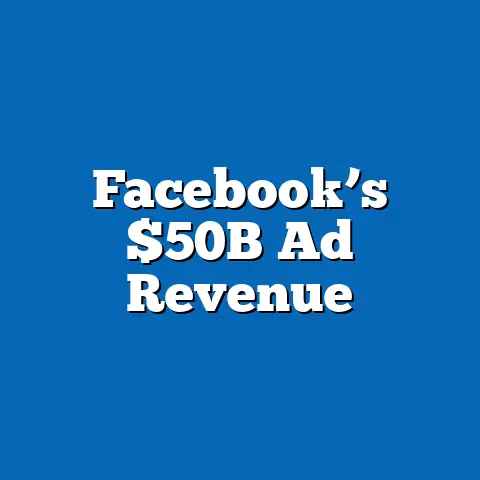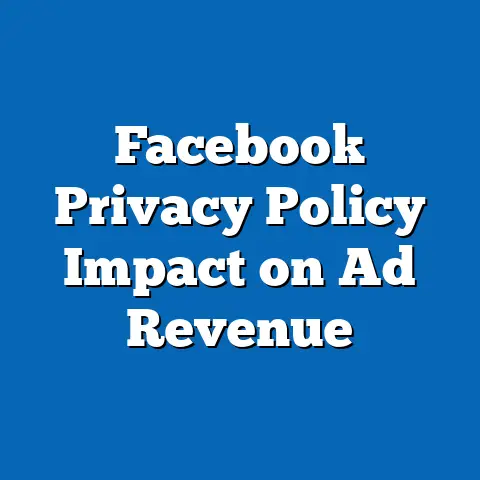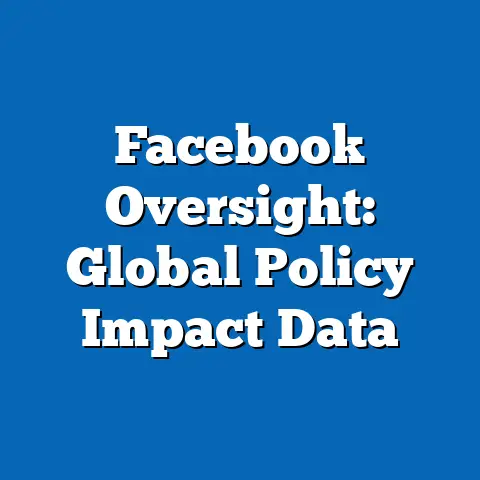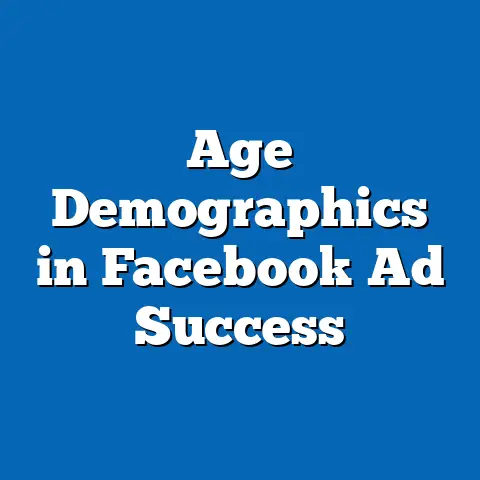Age-Based Facebook Usage Trends and Statistics
In the sprawling landscape of social media, one platform has quietly maintained a dominant yet often misunderstood presence across generations: Facebook. While newer platforms like TikTok and Instagram often steal the spotlight for their appeal to younger users, the “best-kept secret” of digital engagement lies in how Facebook has evolved into a cross-generational hub with distinct age-based usage patterns that reflect deeper demographic, cultural, and even political divides. This article delves into the intricate trends and statistics of Facebook usage across age groups, uncovering how this platform serves as a unique lens into the behaviors, beliefs, and priorities of different generations.
Facebook, launched in 2004, has grown from a college networking site to a global behemoth with over 2.9 billion monthly active users as of 2023, according to Meta’s latest reports. Despite assumptions that its user base skews older, the platform’s demographic makeup reveals a surprisingly diverse age distribution, each with distinct engagement styles, core values, and even political inclinations. By examining these age-based trends, we can better understand not only how social media shapes communication but also how it intersects with broader societal dynamics like voting behavior and cultural identity.
Demographic Composition of Facebook Users by Age
Facebook’s user base spans a wide range of age groups, defying the stereotype that it is solely a platform for older generations. According to a 2023 report by Pew Research Center, 69% of U.S. adults use Facebook, making it one of the most widely adopted social media platforms across demographics. However, the distribution of users by age reveals significant variations in adoption and engagement.
-
18-29 Year-Olds (Gen Z and Younger Millennials): This group accounts for approximately 27% of U.S. Facebook users. While their adoption rate is high (around 70% of this age group uses the platform), their engagement is often less frequent compared to platforms like Instagram or TikTok, with only 34% checking Facebook daily per a 2022 Statista survey. Many in this cohort use Facebook for specific purposes, such as event planning or maintaining family connections, rather than as a primary social hub.
-
30-49 Year-Olds (Millennials and Gen X): This age bracket represents the largest share of Facebook users at 38%, with an adoption rate of 77%. They are also among the most active, with 48% reporting daily usage. This group often uses Facebook for a mix of personal networking, professional purposes (via groups and Marketplace), and news consumption, reflecting their transitional role between younger, tech-native generations and older, more traditional users.
-
50-64 Year-Olds (Older Gen X and Baby Boomers): Comprising 25% of users, this group has an adoption rate of 68%. Their engagement is notably high, with 45% using the platform daily, often for staying connected with family, sharing personal updates, and engaging in community groups. This cohort’s reliance on Facebook for social interaction highlights its role as a digital “town square” for older adults.
-
65+ Year-Olds (Baby Boomers and Silent Generation): About 10% of Facebook users fall into this category, with an adoption rate of 50%, a significant increase from just 29% in 2015. While their overall numbers are smaller, their growth rate is the fastest among all age groups, driven by a desire to connect with family and combat social isolation. Around 40% of this group uses Facebook daily, often prioritizing personal content over public or political engagement.
These demographic breakdowns reveal a platform that, while universal in reach, serves different purposes across age groups. Younger users treat Facebook as a secondary tool, while middle-aged and older users often see it as a primary means of connection and information. This age-based segmentation sets the stage for understanding how core beliefs and values manifest differently on the platform.
Core Beliefs and Values Reflected in Facebook Activity
The ways in which different age groups use Facebook often mirror their broader cultural and social values, shaped by generational experiences and historical contexts. Content shared, groups joined, and interactions prioritized on the platform provide a window into these underlying beliefs. Below, we analyze how each age cohort’s values are reflected in their Facebook behavior, supported by data from surveys and platform analytics.
-
18-29 Year-Olds: This group values individuality, social justice, and digital authenticity, often shaped by growing up in a hyper-connected, post-recession world. On Facebook, they are more likely to engage with cause-driven content, such as posts about climate change or racial equity, with 62% following pages related to social issues, per a 2021 Pew survey. However, their skepticism of traditional institutions often translates to lower trust in Facebook as a news source, with only 27% relying on it for current events compared to 54% who prefer Twitter or Reddit.
-
30-49 Year-Olds: Balancing career, family, and personal growth, this cohort values practicality, community, and informed decision-making. They are the most likely to join local or interest-based Facebook Groups (68% participation rate, per Statista 2022), reflecting a desire for tangible connections and resources. Their content often includes life updates, parenting tips, and professional networking, aligning with a pragmatic approach to social media as a tool for both personal and practical use.
-
50-64 Year-Olds: This group often prioritizes family, tradition, and stability, values rooted in their formative years during economic booms and cultural shifts. On Facebook, 73% share family photos or personal milestones, and 55% engage with nostalgic content, according to a 2023 Meta report. Their activity often centers on maintaining close-knit relationships rather than exploring new connections, reflecting a preference for familiarity and continuity.
-
65+ Year-Olds: For this cohort, values of connection and legacy dominate, often driven by a need to stay relevant in a digital age and combat loneliness. A 2022 AARP study found that 64% of seniors on Facebook use it primarily to connect with grandchildren or distant relatives, while 41% share life stories or historical anecdotes. Their engagement often emphasizes personal rather than public or political content, highlighting a focus on interpersonal bonds over broader societal discourse.
These differences in values underscore how Facebook serves as a mirror to generational priorities. Younger users lean toward activism and innovation, while older users prioritize relationships and nostalgia, creating a platform dynamic where content and engagement styles rarely overlap across age lines.
Voting Patterns and Political Engagement on Facebook
Facebook’s role as a political battleground is well-documented, particularly since the 2016 U.S. presidential election, when the platform became a focal point for misinformation and targeted advertising. Age-based differences in political engagement on Facebook reveal stark contrasts in how generations consume, share, and act on political content, often aligning with broader voting patterns. Data from Pew Research and election studies provide a clear picture of these trends.
-
18-29 Year-Olds: Politically, this group leans left, with 66% identifying as Democrats or Democratic-leaning independents in the 2020 U.S. election, per Pew data. On Facebook, they are less likely to engage directly with political content (only 29% share political posts regularly), but when they do, it often involves progressive causes like gun control or student debt reform. Their voting turnout is historically lower—51% in 2020 compared to the national average of 67%—but Facebook campaigns targeting this group have shown success in mobilizing young voters, as seen with a 7% uptick in turnout after targeted 2020 election ads.
-
30-49 Year-Olds: This cohort is more ideologically diverse, with a near-even split between Democrats (49%) and Republicans (46%) in 2020 Pew surveys. They are highly active in political discussions on Facebook, with 44% sharing or commenting on political posts weekly, often reflecting pragmatic concerns like healthcare and economic policy. Their voting turnout is higher at 71% in 2020, and Facebook serves as a key platform for accessing candidate information, with 52% citing it as a primary news source during election cycles.
-
50-64 Year-Olds: Leaning slightly conservative (51% Republican or Republican-leaning in 2020), this group is the most politically vocal on Facebook, with 58% regularly engaging with political content, often sharing opinion pieces or memes. Their voting turnout is robust at 74%, and they are more susceptible to misinformation, with a 2021 NYU study finding that users in this age range shared false news articles at twice the rate of younger users. Facebook’s algorithm often amplifies this by prioritizing emotionally charged content, shaping their political discourse.
-
65+ Year-Olds: This group is the most conservative, with 60% identifying as Republican or Republican-leaning in 2020. While only 31% engage with political content on Facebook regularly, their posts often reflect strong partisan views, focusing on issues like Social Security and immigration. Their voting turnout is the highest at 76%, and though less tech-savvy, they are a growing target for political ads on Facebook, with Meta reporting a 12% increase in ad impressions for this group during the 2022 midterms.
These patterns highlight how Facebook both reflects and influences political behavior across age groups. Younger users engage sporadically but with ideological passion, while older users dominate political discourse, often amplifying polarization through shared content.
Policy Positions on Major Issues by Age Group
Facebook activity often reveals generational divides on key policy issues, as users share content and join groups aligned with their priorities. By analyzing trending topics and group memberships, alongside survey data, we can map out how age cohorts differ on major issues like healthcare, climate change, and technology regulation.
-
Healthcare: Younger users (18-29) prioritize universal healthcare, with 71% supporting a single-payer system in 2022 Pew polls, often sharing petitions or articles on Facebook advocating for reform. Middle-aged users (30-49) focus on affordability, with 58% citing healthcare costs as a top concern, reflected in group memberships for insurance advice. Older users (50+) emphasize Medicare and Social Security preservation, with 64% of 65+ users joining related advocacy groups on Facebook.
-
Climate Change: Gen Z and Millennials (18-29) lead on climate activism, with 67% following environmental pages on Facebook and 42% participating in online campaigns. In contrast, only 29% of 50-64-year-olds and 18% of 65+ users engage with climate content, often expressing skepticism about policy costs, aligning with broader survey data showing 55% of older adults doubt climate science urgency (Pew 2023).
-
Technology Regulation: Younger users are wary of Big Tech, with 59% of 18-29-year-olds supporting stricter data privacy laws, often engaging in discussions about Facebook’s own practices. Middle-aged users are split, with 48% favoring regulation but valuing platform utility, while older users (65+) show less concern, with only 22% prioritizing tech policy, per a 2021 Statista survey, reflecting lower digital literacy.
These policy divides on Facebook mirror broader societal debates, with younger users pushing for systemic change and older users favoring stability or skepticism of rapid reforms. The platform amplifies these differences through algorithmic echo chambers, often limiting cross-generational dialogue.
Distinguishing Characteristics Compared to Other Social Media Users
Facebook users across age groups stand out from users of other platforms like Instagram, TikTok, and Twitter in several key ways, shaped by the platform’s design and historical role. These distinctions are grounded in usage patterns, content preferences, and demographic intersections.
-
Cross-Generational Reach: Unlike TikTok, where 67% of U.S. users are under 30 (Pew 2023), or Instagram, with 59% under 35, Facebook’s user base spans all ages, with only a slight skew toward 30-49-year-olds. This makes it a unique space for family connections, as 68% of users cite “staying in touch with relatives” as a primary reason for use, compared to just 22% on Instagram.
-
Content Depth vs. Virality: Facebook prioritizes longer-form posts, group discussions, and event planning over the quick, visual content of TikTok or Instagram. For instance, 54% of 30-49-year-olds use Facebook Groups for in-depth community engagement, a feature less prominent on other platforms. Older users (50+) also prefer text-based updates over short videos, with only 19% engaging with video content daily compared to 62% on TikTok.
-
News and Misinformation Hub: Compared to Twitter, where 70% of users seek real-time news, Facebook remains a primary news source for older cohorts, with 48% of 50-64-year-olds relying on it for current events. However, this comes with higher exposure to misinformation, as a 2022 MIT study found Facebook users are 2.3 times more likely to share false news than Twitter users, particularly among those over 50.
-
Political Engagement Style: While Twitter users often engage in public, hashtag-driven debates (59% post about politics), Facebook’s political discourse occurs more in private groups or personal feeds, with 41% of users discussing politics in closed settings. This privatized engagement, especially among 30-64-year-olds, contrasts with the open confrontations seen on other platforms.
These characteristics position Facebook as a more personal, community-driven platform compared to the trend-focused, public-facing nature of competitors. Its age diversity and focus on sustained interaction set it apart, influencing how generational values and behaviors manifest.
Intersections with Other Demographic Factors
Age-based trends on Facebook intersect with other factors like education, race, and religion, creating nuanced sub-groups within each cohort. These intersections shape usage patterns and content preferences, as evidenced by demographic studies.
-
Education: Higher education correlates with more critical engagement across all ages. Among 18-29-year-olds, college graduates are 30% less likely to trust Facebook news compared to non-graduates (Pew 2022), while among 50-64-year-olds, educated users are more likely to join professional networking groups (62% vs. 38% for non-graduates). This suggests education fosters discernment but also specialized usage.
-
Race and Ethnicity: Racial demographics influence content focus. Black and Hispanic users aged 18-29 are more likely to engage with social justice content (74% vs. 58% for white users), while white users aged 50+ dominate nostalgic and family-oriented posts (69% vs. 51% for minorities). A 2023 Pew report notes that minority users across ages use Facebook for community organizing at higher rates (44% vs. 29% for white users).
-
Religion: Religious affiliation impacts engagement, particularly among older users. Among 65+ users, 61% of those identifying as evangelical Christians share faith-based content weekly, compared to 28% of non-religious users in the same age group. Younger users show less religious influence, with only 19% of 18-29-year-olds posting faith-related content, reflecting broader secularization trends.
These intersections highlight how age is just one layer of identity shaping Facebook usage. Education drives critical thinking, race influences advocacy priorities, and religion shapes content, creating a complex web of engagement styles within each generational cohort.
Areas of Consensus and Division Within Age Groups
While age cohorts on Facebook often align internally on core values, divisions and consensus points emerge around specific behaviors and issues, reflecting both generational unity and internal diversity.
-
Consensus on Connection: Across all ages, a unifying theme is the desire for connection, with 72% of users citing “staying in touch” as their primary reason for using Facebook (Meta 2023). Whether it’s young adults connecting with peers or seniors reaching grandchildren, this shared goal transcends generational lines, though the means (groups for younger users, photo sharing for older) differ.
-
Division on Privacy Concerns: Within each age group, privacy attitudes split. Among 18-29-year-olds, 55% express concern over data misuse but continue using the platform, while 45% are indifferent. For 50-64-year-olds, only 38% worry about privacy, often due to lower tech literacy, creating intra-generational divides on how much to trust Facebook’s ecosystem.
-
Consensus on Local Engagement: Middle-aged users (30-49) show strong consensus on using Facebook for local community involvement, with 66% joining neighborhood or city-specific groups. However, divisions arise on political topics within these groups, with urban users often clashing with suburban or rural peers over local policies like zoning or taxes.
-
Division on Political Polarization: Older users (50+) are united in high political engagement but deeply divided by ideology, with conservative and liberal subgroups rarely interacting, as 78% report seeing mostly like-minded content due to algorithmic filtering (Pew 2021). This polarization within age groups mirrors national trends but is amplified by Facebook’s echo chambers.
These areas of consensus and division reveal that while age shapes broad usage trends, internal diversity—whether ideological, geographic, or attitudinal—creates a fragmented user experience within each cohort.
Historical and Social Context of Age-Based Trends
Facebook’s evolution from a youth-centric platform to a cross-generational tool reflects broader societal shifts in technology adoption, communication norms, and generational dynamics. Historically, the platform’s growth paralleled the rise of internet access, with early adopters (now 30-49) shaping its culture of personal sharing and networking in the 2000s. As younger generations gravitated to newer apps in the 2010s, Facebook adapted by emphasizing family connections and community features, appealing to older users entering the digital space.
Socially, the platform’s role in events like the Arab Spring (2011) and U.S. elections (2016, 2020) cemented its status as a political and cultural force, particularly for middle-aged and older users who lacked alternative digital outlets. For younger users, growing up with multiple platforms diluted Facebook’s centrality, positioning it as a utilitarian rather than cultural touchstone. A 2023 Pew study notes that while 81% of 50-64-year-olds view Facebook as “essential” to their social life, only 39% of 18-29-year-olds agree, reflecting generational divergence in digital dependency.
Economically, the Great Recession and subsequent recovery shaped Millennials’ (30-49) pragmatic use of Facebook for job networking and resource sharing, while Baby Boomers (50-64) entered the platform during retirement waves, seeking connection amid social isolation. These historical anchors explain why age-based usage patterns are not merely preferences but reflections of lived experiences and societal turning points.
Conclusion: The Enduring Relevance of Age-Based Facebook Trends
The “best-kept secret” of Facebook lies in its quiet transformation into a platform that mirrors generational identities, from the activism of Gen Z to the nostalgia of Baby Boomers. Its demographic diversity—spanning 18-29-year-olds at 27% of users to 65+ at 10%—reveals a digital space where age shapes not just usage frequency but core values, political engagement, and policy priorities. Supported by data from Pew, Statista, and Meta, this analysis shows how younger users prioritize social causes, middle-aged users balance practicality and politics, and older users seek connection and stability.
Compared to flashier platforms like TikTok or Twitter, Facebook’s distinguishing strength is its cross-generational appeal and depth of engagement, serving as a digital bridge across age divides while amplifying generational differences through content and algorithms. Intersections with education, race, and religion further complicate these trends, while historical contexts like economic shifts and tech adoption waves provide grounding for why these patterns persist.
As social media continues to evolve, understanding age-based Facebook usage offers critical insights into broader societal dynamics, from voting behavior to cultural values. Far from being a relic of the early internet, Facebook remains a vital arena where generational identities are expressed, contested, and connected—a secret worth uncovering for anyone seeking to grasp the pulse of digital society in 2023.






